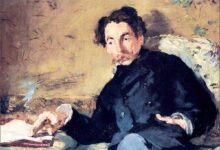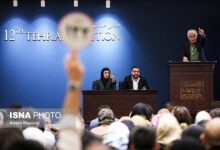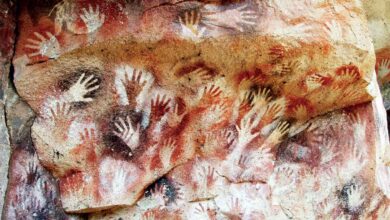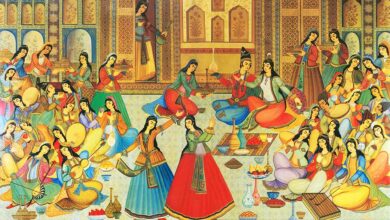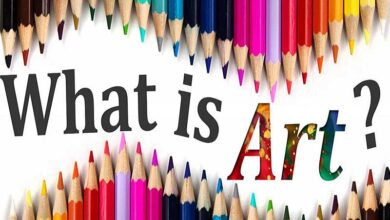Role of culture in creation of a work of art
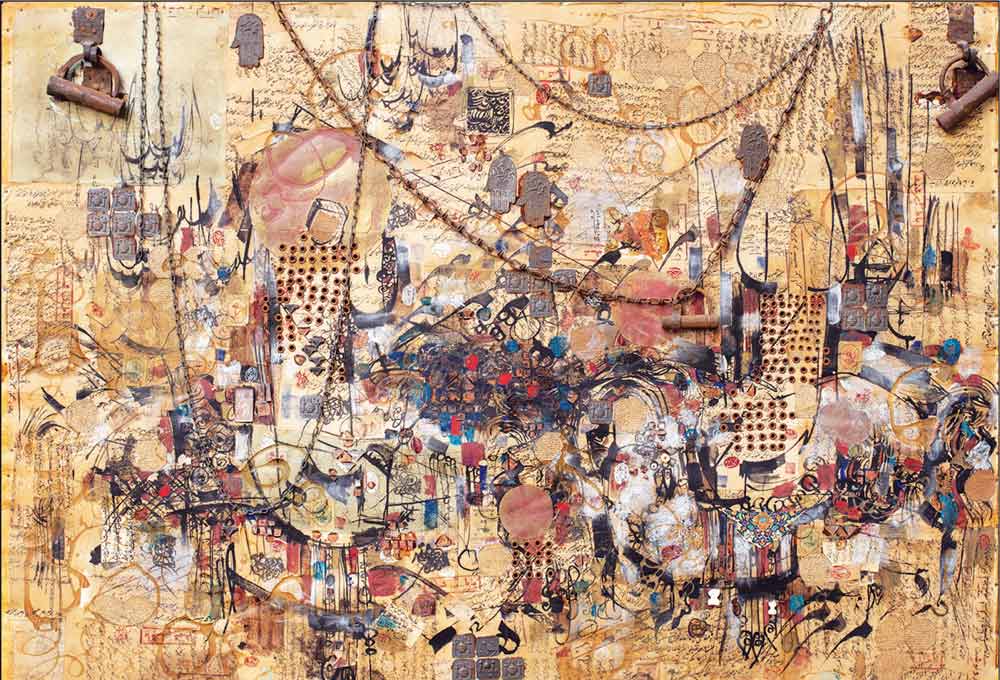
Alireza Karimi Saremi: One of characteristics of every land is culture of its people throughout history, and culture is an all-encompassing indicator for permanence and preservation of authenticity of any nation in the age of globalization.
Farhang is a Persian word and consists of two parts “Far” and “Hang” where “Far” as a prefix means front, top… and “Hang” comes from Avestan root “Tanga” and means drag, heaviness and weight Is. [1] Culture has always been an influential concept and has played a vital role in creating political and social relations between different nations of world from the past centuries until now. But this word also has other meanings; In Amid dictionary, it is defined as science, knowledge, politeness, knowledge, teaching, and education, and in Moeen dictionary, it is written as meaning of intellect, wisdom, resourcefulness, and solution. In Persian Language and Literature Academy, it is also defined as “the set of habits and behaviors that are transmitted from one generation to another in a human society, mainly through social processes and not biological processes, and in its symbols, beliefs, art, skills, and customs. Society reflects what they have meant.” [2]
In 1871, Edward Barnett Taylor [3] gave a complete definition of culture in his book Elementary Culture and wrote: “Culture is a complex collection that includes knowledge, beliefs, arts, industries, techniques, morals, laws, traditions, and finally all habits and behaviors. And rules that a person, as a member of society, learns from his society and has duties and obligations towards that society. [4]
Anthony Giddens also believes that culture is related to way of life of a specific community along with their habits and customs and material goods they produce, and society refers to a system of mutual relations that relates people who have a common culture to each other. No culture can exist without society, just as there is no society without culture. Without culture, we would not be human at all, in commonly understood sense, we would not have a language to express our intentions, nor any sense of self-awareness and ability to think and reason. Culture can be conceptually distinguished from society, but there is a very close connection between the two. [5]
Some definitions and meanings of culture have been used by Persian-speaking poets in ancient centuries. In the Shahnameh, Ferdowsi used culture in the meaning of knowledge and science in the poem related to “Anushirvan’s Precept”:
Ask the wise, then judge, which culture was better or Gohar
This is answer given by two guides / that culture is more than a gem
That culture of adorning one’s life / about the gem was easy to speak
Also, Saadi has brought culture to mean foresight and rationality:
Do whatever you want, we are not at war with you / It is not culture to fight with oppressors
Nasser Khosrow has also mentioned culture in concept of virtue and knowledge and agent of human agency in the position of thought and action:
By grace, knowledge, culture and speech / you have become independent in both worlds
Throughout history, human effort towards “beautification” and “pleasantness” has been one of characteristics of culture. As we know, the first humans created art on the walls of caves after they were relieved from difficulties of providing food, shelter and clothing. Perhaps this thought of a wise man by leaving a mark of himself on the walls of caves is the beginning of association of culture and art. Thousands of years after them, psychologists, psychoanalysts and philosophers each examined art from a different perspective. For example, Greek scientists considered art a “gift of the gods”. Some psychologists and art experts consider works of art as masterpieces created by people with special thinking, for this reason, they have never considered works of art apart from cultural phenomena. Art in any society is defined by social symbols and conventions, and flourishing artist takes his works from the society in which he lives, and ultimately his works of art affect the society, so it is a reflection of culture, and art is actually for individual needs and benefits. It is social and cultural. [6]
“In the historical theory of art, art is considered as a cultural stage and it can be concluded that cultures can pass to a stage where art is created.” [7] So how can we ignore role of culture in creating artworks of a dynamic society? ? With a little thought about culture, one can see its essential role in artistic creations.
German philosopher Nietzsche[8] believed that “Role of artist is as a creator and cultural leader of a society”.[9] Great artists in the world, inspired by their culture and cultural characteristics and different nations, have created universal and lasting works. It should not be overlooked that the roots of many pure artistic ideas are based on knowledge of cultures, such that “around 1700 AD, the people of France called themselves the nation of cultural pioneers or nation of king of sun, and others also thought of them as such. Because France was source of all new ways of designing clothes and architecture and other aspects of culture and art. [10]
Here it is necessary to raise a question: Can art by being inspired by culture be effective in process of social evolution of a society? Undoubtedly, the artist creates a work of art based on his knowledge and perceptions from environment in which he was raised and learned. This education is formed based on culture and customs of his educational environment, willy-nilly it affects his artistic expression and accordingly society is also affected by him.
Sebastião Salgado [11], a famous Brazilian photographer, says in documentary film about his life [12] that photographers take pictures with their culture in such a way that this type of view can be seen in their work process and in their works. A real example of this belief can be seen in Iran’s pottery, which has an ancient history. This art dates back to Paleolithic and prehistoric times in the ancient regions of Balochistan. In 3200 B.C. The production of pottery in city of Sohtete has been very impressive, but Hadith of Kalpurkan pottery is another story, a pottery that is full of passion and intelligence in the soul and body of the women of Kalpurkan village. The fusion of Baloch culture and cultural symbols in design and decoration of these terracotta structures is a sign of maturity and awareness of thousands of years of culture; Pottery that is made without a potter’s wheel and only with concentration of mind and hands of Baloch women artists. This reflection of cultural thinking and thought has been able to find a high position in the world arena, although it has remained abandoned and unknown in our country of Iran.
In the meantime, it should be mentioned that works of art that are rooted in their own culture and cultural characteristics have always been prominent and respected in the world arena. For example, in Iran in 1960s, we can point to beginning of a thinking with a traditionalist approach but a modernist thought inspired by cultural signs. In the first volume of the book Ninety Years of Innovation in Iran’s Visual Art, Javad Mojabi writes: “Parviz Tanavoli is one of the first people who, both as a leading artist and as founder and professor of Faculty of Decorative Arts, and founder of Blue Studio, many young artists noticed artistic values of functional and folkloric objects. He was able to be a pioneer in field of visual arts of Iran due to semi-industrial-semi-artistic creations common in society such as locks, rugs, rugs, seals, charms, motifs of basme curtains, etc. It made many young people at that time, such as Zendeh Roudi, Qandriz, Arabshahi and Pilaram, aware of visual signs and codes of Iran before and after Islam. [13]
Parviz Tanavoli, along with artists such as Marko Grigorian, Sadegh Brirani, Jazeh Tabatabai and Nasser Oveisi, in this traditional national trend, each turned to source of inspiration of Iranian art in a different way. Tanavoli became aware of visual values of objects such as locks, patterns of nomadic carpets and gabes, and was creatively inspired by their colors and forms in his paintings and sculptures.
Jazeh Tabatbai tried to renew painting motifs and Qajar curtains and shaped his sculptures based on elements of urban folklore, especially Tehran. Nasser Oveisi renewed Seljuk motifs of bowls and mugs and reconstructed motifs of the books of first Islamic centuries. Hossein Zendeh Roudi paid attention to motifs of prayers and talismans and folk religious paintings and by giving geometrical order to those works and filling their environment with writing and then using the motif of calligraphy, he established his composition and aesthetic world. Reza Bangiz paid attention to mourning ceremonies and street and bazaar customs, and Masoud Arabshahi used Sasanian motifs in his paintings with an architectural perspective. Sadegh Tabrizi also developed his experience in the field of calligraphy and miniatures.
“Saqqakhaneh” was title given to this group of artists by Karim Emami, a critic and journalist; An artistic movement that opened a new window in Iranian painting art. He writes from words of Parviz Tanavoli: “Around 1961, Zendeh Roudi and I went to Hazrat Shah Abdul Azim, and there our attention was drawn to a number of religious printed images that were offered for sale. At that time, we were both looking for various materials. We were Iranians to be able to use them in our work. Those religious images seemed very suitable to us. We bought some of those images and took them home. From the simplicity of their form, from the repetition of patterns in them, and from their bright and impressive color. We liked it. The first designs inspired by Zinde Roudi are actually the first works of Saqqakhaneh.” [14] Years later, after each of these traditionalist artists became famous in their field and had a special style, result of their experience in It was exhibited in the Tehran Museum of Contemporary Arts in 1977. In a broad perspective, these artists can be called traditionalist innovators who, based on thousands of years of culture and art of their people, searched for rediscovery and artistic use of it.
Therefore, it can be said that art reinforces culture and by producing and creating a work of art, it will become part of the culture of a nation. The recognition of an artist in honoring the historical past, the land of the ancestors, the saga of the fathers, the mother tongue, the religious traditions, the national splendors and the art and literature of one’s heritage is one of criteria that shines cultural identity in the works of an artist. The artist determines. [15] It is there that works of art appear in the form of thought, and artists with artistic understanding and inspiration from culture and cultural characteristics create works that express countless hidden and verbal secrets.
Considering what has been said, it can be acknowledged that empty place of a school like “Saqqakhaneh” is very evident in today’s artistic society of Iran because after several decades of activity, it seems that no other coherent movement has been able to replace this movement. Although many artists tried to take steps inspired by Iranian thought, thought and culture, but the lack of a completely Iranian school that arose from cultural roots, such as flow of Saqqakhaneh painting, has not yet emerged.
Sources:
[1] – Rooh Ol Amini, Mahmoud (2015), Field of Cultural Studies, Tehran, Attar, p. 11.
[2]- http://vajeyar.apll.ir
[3] -Edward Burnett Tylor, a British anthropologist who is known as the founder of cultural anthropology.
[4] — Rooh Ol Amini, Mahmoud (2016), in the field of culture, Tehran, Ettelaat, pp. 17 and 18.
[5]- Giddens, Anthony (2006), Sociology, translated by Manouchehr Sabouri, Ni, Tehran, p.56.
[6]- Rooh Ol Amini, (2015), pp. 72-74.
[7] – Townzand, Dabni (2014), Historical Dictionary of Aesthetics, translated by Fariborz Majidi, Tehran, Farhangistan Honar, p. 128.
[8] – Philosopher, poet, cultural critic whose works have left a deep impact on Western philosophy and the history of modern thought.
[9] – Townzand, Dabni (2014) p. 410.
[10] – Gumbridge, Ernst Hans (2006), Developments of artistic taste in the West, translated by Mohammad Taghi Faramarzi, Tehran, Farhangistan Honar,, p. 58.
[11] – Photographer, born in Brazil with a doctorate in economics from the University of Paris.
[12] – The movie Looking back at you, directed by Andrew Ashnell, is one of the series of documentaries produced by the BBC in 1993 under the title Omibus.
[13]- Mojabi, Javad (2016), Ninety Years of Innovation in Iranian Visual Art, Volume 1, Tehran, Peikereh, p. 107.
[14] – The same source, p. 111.
[15]- Rooh Ol Amini, (2016), p. 148.




